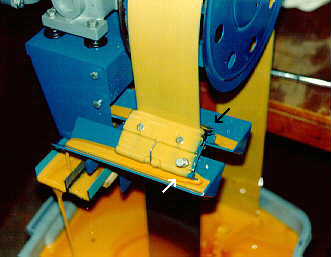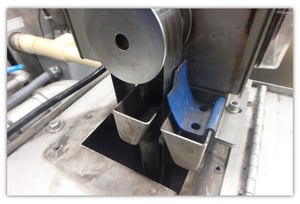Oil skimmers are tremendously versatile, especially when the wide range of venues where they are called upon to operate is considered. Basically, anywhere oil and water have the potential to mix presents an opportunity for a skimmer to be put to good use, keeping oil out of water or coolant so that it can be recycled, re-used, or safely discharged.
The applications where these unsung workhorses perform are numerous, with skimmers being called upon to keep oil out of the places it does not belong, such as machinery coolant, bilge tanks, and wastewater that is discharged from parking garages. While there are differences in design from one skimmer vendor to the next or variations based upon their application, all skimmers ultimately rely on the differences in specific gravity and surface tension in oil and water to allow them to attract and capture oil. A rotating disc or belt is then used to collect the oil, where it can then be recycled or reused.
Make sure the skimmer is mounted level
It is strongly recommended to take the time during the initial installation to check that the skimmer is mounted and fastened securely in an orientation that is level. This is especially critical for skimmers with free-hanging belts to ensure proper tracking over the pulleys. This will promote better performance and reduce premature wear on the belt, wipers, pulleys, and motor.
Proper positioning of wiper blades is essential
Maintaining the proper amount of tension on the wiper blades is key to optimizing skimmer performance. Striking a balance that allows the blades to contact the belt in a manner that allows them to remove the majority, if not all of the oil from the belt is ideal. Over tightened wiper blades will cause premature wear on blades. Under-tightening leads to poor recovery results, as the oil collected by the belt is not fully removed as the belt passes over the wipers.
Run the skimmer when oil is present
While this may seem like a rather obvious point, running a skimmer constantly may actually be counterproductive, because it increases the likelihood that coolant or water will be picked up by the belt. A timer or an oil in water sensor can be employed to optimize skimmer operating efficiency by controlling the times when the unit is running.
Oil Skimmers Get the Dirty Jobs Done
To learn more about oil skimmers, please contact our experts at 440-543-7400 or visit our website: www.abanaki.com
You are just one step away from downloading Abanaki's most detailed resource on our oil skimming equipment. Simply click at the button to get your ultimate guide now.



